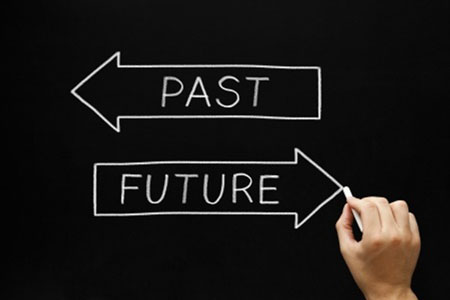How Affairs Have Changed Over The Years
 Just as in any type of relationship, marriages and marital affairs have changed over the centuries. As society grows and changes, so do the relationships we have with each other. We expect different things from partners and aspects of personal relationships become more or less acceptable by the public at large. The early days of civilization and their polygamist ideals ruled out affairs. A man could have most any woman he wanted and more than woman was encouraged to join a marital union. In the stone age, coupling was encouraged as a way to control sexual acts and manipulate population. However, all across the world, marriage work differently. Ancient Hebrews were polygamists. King Solomon had over a thousand wives and concubines. Chinese and African cultures have also had polygamist ideals throughout the centuries. American Mormonism began in the 19th century with its polygamist beliefs. It still exists today and does a similar belief in the Muslin culture. It was only two centuries ago that monogamous marriage became the norm. Before that, it was only found in small pockets of North America and Western Europe.
Just as in any type of relationship, marriages and marital affairs have changed over the centuries. As society grows and changes, so do the relationships we have with each other. We expect different things from partners and aspects of personal relationships become more or less acceptable by the public at large. The early days of civilization and their polygamist ideals ruled out affairs. A man could have most any woman he wanted and more than woman was encouraged to join a marital union. In the stone age, coupling was encouraged as a way to control sexual acts and manipulate population. However, all across the world, marriage work differently. Ancient Hebrews were polygamists. King Solomon had over a thousand wives and concubines. Chinese and African cultures have also had polygamist ideals throughout the centuries. American Mormonism began in the 19th century with its polygamist beliefs. It still exists today and does a similar belief in the Muslin culture. It was only two centuries ago that monogamous marriage became the norm. Before that, it was only found in small pockets of North America and Western Europe.
The First Affairs
Couples did not begin to marry until about 4000 years ago. (Read The History Of Marriage) The first recorded instance was in Mesopotamia. It was first used to preserve royal families, pairing kings and queens. Royal daughters were promised to marriage as a means to join alliances, acquire land, and produce royal heirs. Affairs in those days were punishable by death, at least for the woman. The Latin word matrimonium, which is derived from mater (mother) clarifies the implication that marriage is simply for the purpose of child bearing. For a woman to stray could mean a possible illegitimate birth and counterfeit heir.
The Evolution of Affairs
When the Roman empire collapsed in the 5th century, marriages became officiated by churches and elevated to a holy union. Churches and religion grew in power throughout the Middle Ages, and with them, their influence over marriage. Marital unions were not only holy but named one of the churches seven sacraments along with penance and baptism by 1215. By the 16th century, it was decreed that all marriages were officiated by a priest with witnesses in a public place. Now, marriages are a holy union of the church, governed by the most powerful force in the world. Affairs became a moral wrong that put your body and soul at risk. People who had affairs became susceptible to public scorn and scrutiny. Remember the story of The Scarlet Letter? Colonial women were forced to wear a red letter A, which stood for adulterer, for all of town to see that they were of loose morals and low moral character.
Affairs Become Commonplace
For many years, love did not factor into the marriage equation. In fact, the two were thought to be incompatible. In some cultures, men were not allowed to kiss their wives in public. Affairs were where the romance was in the 12th and 13th centuries. They were considered the only place untainted by life’s realities where love could grow. Being in love with your wife was not accepted or encouraged. It wasn’t until the 17th and 18th centuries that people began to take control of their love lives. The Industrial Revolution and growth in the middle class spurred the movement by providing a chance for young men to choose a wife and pay for a wedding and marriage without support from his parents. Divorce became a thing during this era as people demanded ways to end unhappy unions. It was during this era that affairs started to become more commonplace. Tired of living without love, they sought it out in more open ways.
As years progressed, people became less concerned with the community as a whole and more concerned about their own health, well-being and happiness. More and more people began to have affairs (See Stats). The stigma is still attached, even after all these year, however. The union of marriage represents commitment and anyone infringing on that belief is thought to have low moral character. Especially with the ease of divorce in current society. Marriage and affairs have made big changes over the years. The key is to learn from our history and use it to better our lives.
Sorry, comments for this entry are closed at this time.